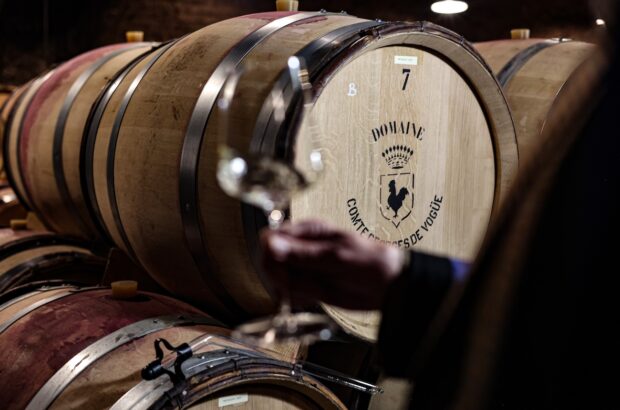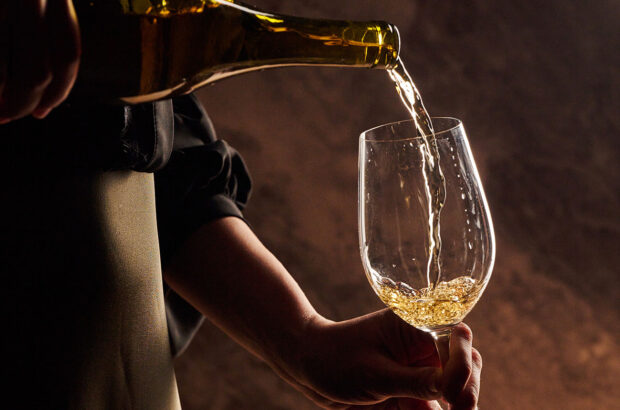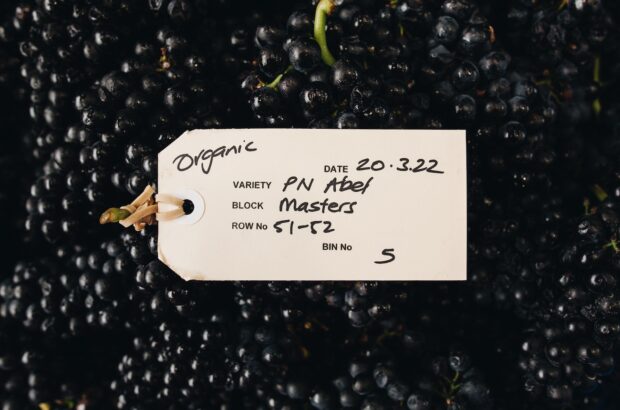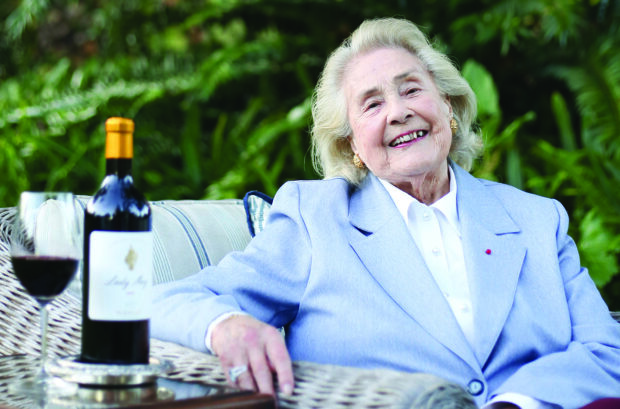Matched in excellence by quality cuisine, the wine culture in Alto Adige (also known as South Tyrol) is deep-rooted. Vines grow at varied altitudes in a Y-shaped area, with the main city, Bolzano, at its heart. Terrains here range from sandy marl and limestone to schist or porphyry, and wide temperature swings make for wines that combine the fresh, fragrant aromas of cooler climates with warm-weather power and complexity. Most come under the six Alto Adige DOC sub-zones, while more specific MGA zones (menzione geografica aggiuntiva: a specific, delimited area within a DOC/G, broadly equivalent to a ‘climat’ in France) are planned.
Bolzano’s appealing historic centre has countless references to wine in road names, frescoes and the cathedral’s medieval ‘wine door’. Protected by mountains, the city registers some of Italy’s hottest summer temperatures and vines flourish here. These include the Lagrein vines surrounding Castel Mareccio (see ‘My perfect day’). The true home of fruity, vibrant purple Lagrein is, however, across the Talvera river in the Gries neighbourhood. At the Muri-Gries monastery, a former fortress that’s been home to Benedictines since 1845, benchmark Lagreins include Klosteranger, a single-vineyard Riserva from vines grown within the monastery walls.
Another monastery that plays a key part in Alto Adige winemaking is Abbazia di Novacella. Active since 1142, it’s among the world’s oldest wineries and is fascinating to visit. Here in the cool Isarco valley, northeast of Bolzano, white grapes such as the semi-aromatic Kerner thrive; Sylvaner, the winery’s speciality, also grows well here – a new sparkling version is due for launch in December 2022. The producer is also one of several experimenting with fungus-resistant [hybrid] PIWI varieties.
Also in the Isarco valley, at the 3ha Röck estate, Hannes Augschöll is among the new wave of winemakers bringing changes; his range of low-intervention wines includes a Müller- Thurgau pét-nat (see our ‘Buyer’s guide’). ‘I’m aiming for drier, lighter wines than my father’s,’ he says. Each autumn, the winery, along with many others, opens its doors for the Törggelen festival, serving home-cooked dishes and speck (cured ham) that’s been smoked at the stone farmhouse.
At the southern tip of the Isarco valley, with steep 70° slopes, Gump Hof has been run by the Prackwieser family for two centuries. Markus, in charge since 2000, introduced Sauvignon Blanc here, and his wines have an irresistible intensity. He’s one of many planting at ever-higher altitudes; 2021 was the first harvest at 800m, near the striking Presule Castle.
Alto Adige: the facts
Area planted 5,600ha
Altitude range 200m-1,000m
Days of sunshine 300 per annum
Annual production 40 million bottles (64% white, 36% red); 98% are DOC
Source: Consorzio Vini Alto Adige, 2021 altoadigewines.com
Schiava revival
‘Schiava is so versatile, ideal with contemporary cuisine and our local specialities’
Another young winemaker bringing new ideas is Martin Ramoser at his family’s Fliederhof winery in Santa Maddalena di Sotto, where pergola-trained Schiava vines surround the pretty hillside church, walkable from Bolzano via the St-Oswald footpath. Here, a percentage of inky Lagrein is typically added to naturally pale Schiava (also known as Vernatsch). After dominating the region’s winemaking for centuries, the fresh, light variety has endured a generic table wine image, but things are looking up. ‘I really believe in Schiava’s renaissance,’ says Ramoser. ‘It’s so versatile, and ideal with contemporary cuisine and our local specialities.’

At Fliederhof winery, from right: Martin Ramoser, his parents Stefan and Astrid, and his wife Katja. Credit: Tobias Kaser Photography
Schiava is also the main grape in the Merano sub-zone, northwest of Bolzano, and the Caldaro DOC area around Caldaro lake to the south. With neighbouring Appiano, Caldaro is the real heart of the region’s wine scene and central to the Strada del Vino with its network of paths through vineyards. Regular events at Caldaro include the ‘Fascination wine world South Tyrol’ sommelier talks and tastings, held on Sundays from April to November; the Kalterer Weintage ‘wine days’ in the market square on 1-2 September; and Weinkulinarium (‘Wine & Cuisine’) on Saturday 1 October (see kaltern.com). It is home to a historic wine museum and wineries such as Peter Sölva, run by the same family for 10 generations making some memorable wines including a Merlot-Cabernet Sauvignon-Lagrein blend, Amistar.
With so many growers owning such tiny plots (on average a single hectare), Alto Adige’s admirably run cooperatives are fundamental to the region’s wine production. But rather than churning out lowest-common-denominator wines, many are impressively experimental. The Caldaro co-op is currently trying out different Schiava clones, while Cantina Girlan has launched a Pinot Nero project, and St Pauls is working with Pinot Bianco, the variety grown throughout the region that’s a locals’ favourite for its dry, peppery bite. It’s also a key player (with Pinot Nero and Chardonnay) in the growing movement for Alto Adige traditional-method spumante.
Idyllic setting
The landmark 17th-century Castel Ringberg has fabulous views from the terrace across a patchwork of vines to Caldaro lake. Owned by the Elena Walch winery, a protagonist in the recent drive for quality, it’s run with style and brio by Walch’s two daughters. The main site at Termeno (Tramin in German), the village Gewürztraminer is named after, has a historic cellar with traditional sculpted barrels. While locals are fond of recalling that Gewürztraminer isn’t popular here, some excellent versions of the aromatic variety are produced.
Nearby at Manincor, Count Michael Goëss-Enzenberg and his wife Sophie are hands-on at their biodynamic estate, in an idyllic setting with sheep and chickens among the vines, a stunning manor house dating from 1608 and a modern underground cellar; no wonder it was chosen as the setting for the 2021 TV mini-series The Winemaker (Good Friends Filmproduktion). Barrels are made from estate-grown wood and the wines, including the Mason Pinot Nero, share an elegance that reflects the location.
Horses and oxen are among the animals grazing the vineyards at the Alois Lageder winery, a collection of atmospheric farm buildings in Magrè at the southern end of the Strada del Vino. Many of the wines have Demeter biodynamic certification, and the top range, which ages to the sounds of Bach’s Brandenburg Concertos, includes an exceptional Chardonnay and a historic field blend of Cabernet Sauvignon, Carmenère, Cabernet Franc and Merlot from 140-year-old vines at the Löwengang estate. But they’re mere youngsters compared to a vine planted in the village in 1601, a natural monument that’s still producing grapes today.
Alto Adige is the diamond tip of the Italian wine scene and much of its wine never leaves the region – all the more reason to plan a trip to this extraordinary wine-lover’s wonderland.

Alois Lageder. Credit: Gianni Bodini
My perfect day in Alto Adige
Morning
Start the day at the Piazza Erbe market in central Bolzano to buy locally grown apples, then pick up spicy pastries or choose from a wide range of breads at the Franziskaner bakery (@franziskanerbaeckerei) around the corner. Pop into the Franciscan church next door to see medieval frescoes before taking your purchases for a breakfast picnic at the Talvera riverside park, stopping for coffee on the way. Take a short stroll to see the vines at Castel Mareccio, then cross the river into the Gries neighbourhood. Visit the imposing Muri-Gries monastery (see p68) and try a selection of wines, including some of the very best Lagrein there is. Before leaving the area, walk through exotic vegetation along the zig-zagging Guncina footpath for a stunning panoramic view across the city to the Dolomites.
Lunch & Afternoon
Pick up your car and head southeast and up another hillside for lunch at the idyllic Grafhof farmhouse (see ‘Your Alto Adige address book’), just 5km out of town – though it feels much further than that. Tuck into a meal of farm-fresh eggs with potatoes and speck, followed by strudel made with home-grown apples, all while enjoying the fabulous views across the valley to the Santa Maddalena hill and its tapestry of pergola-trained vines. After lunch, drive south along the Strada del Vino to Caldaro. Explore the attractive town centre, visit the Museo del Vino and stop at the Peter Sölva winery (see above). Walk through vines on the Sentiero del Vino footpath to see Caldaro lake, ending up back in the centre at the Casa del Vino Punkt (see ‘Your Alto Adige address book’) wine bar for a personalised tasting of local wines.
Evening
From Caldaro it’s just 7km to Hotel Weinegg (see ‘Your Alto Adige address book’). After checking in, cross the hotel garden and vines beyond to the K Martini & Sohn winery. Try some of its excellent wines or relax at a barrel table on the patio with a glass of old-vine Pinot Bianco. Enjoy a delicious dinner on the hotel terrace – perhaps local char with white wine mousse and something from the extensive wine list – then finish the day with a relaxing swim under the stars in the hotel’s heated indoor-outdoor pool.
Your Alto Adige address book
Accommodation
Angerburg, San Michele Appiano
This simple yet comfortable, family-run hotel stands in a large garden with an orchard and pool. Balconies have spectacular views and the restaurant serves traditional dishes and local wines.
Hotel Weinegg, Cornaiano
A five-star resort hotel with a well-equipped spa and indoor-outdoor pool, plus superb dining and an impressive wine list including bottles from the owner’s family estate.
Panholzer, Caldaro
Stay at the suite among the vines near lake Caldaro and tuck into beautifully presented seasonal dishes at the gorgeous stone farmhouse restaurant with courtyard garden.
Restaurants & bars
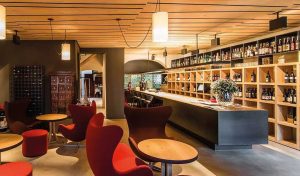
Löwengrube
Alois Lageder Paradeis, Magrè
Named after the mountain behind, this organic-certified winery restaurant specialises in light and tasty dishes with much use of estate-grown vegetables, paired, of course, with Alois Lageder wines.
Casa del Vino Punkt, Caldaro
Both a locals’ bar and showcase for Caldaro wines, this informal ‘house of wine’ on the central piazza offers 20-25 wines by the glass, personalised tastings and typical snacks including smoked sausage and local cheese. @weinhauspunkt
Grafhof, Bolzano
The Staffer family’s historic Buschenschank (farmhouse winery serving food), which overlooks Bolzano, has a wood-clad stube and terrace. Enjoy tasty home cooking such as spinach-filled pasta, paired with Schiava wine.
Löwengrube, Bolzano
Tradition and design combine at Bolzano’s oldest restaurant, dating from 1543. There are medieval frescoes, a thousand-strong wine list and a menu featuring dishes such as braised lamb cannelloni.
Rifugio Oberholz, Obereggen
Take the Obereggen chairlift or walk (90 minutes) to this contemporary mountain hut (2,096m above sea level) for spectacular scenery and superb cuisine. Try the Alpine beef with a Lagrein Riserva and sweet kaiserschmarrn pancakes.
Vögele, Bolzano
A local institution with an all-day menu of traditional specialities, this historic tavern guarantees at least 75% regional wines as part of the Locanda Sudtirolese association.
How to get there
Bolzano is 60km from Trento and 150km from Verona, the nearest major airport along with Innsbruck (120km); Alto Adige Bus runs regular shuttles. Bolzano airport has some international flights.

Credit: Maggie Nelson







